Stephen Davies on writing Hilda: the fearless girl character that everyone's talking about
Published on: 20 Medi 2018
To coincide with the release of Hilda on Netflix, Flying Eye Books are publishing a series of illustrated novels, starting with Hilda and the Hidden People. Author Stephen Davies tells us how he got involved with the Hilda-verse, and which character is his favourite!
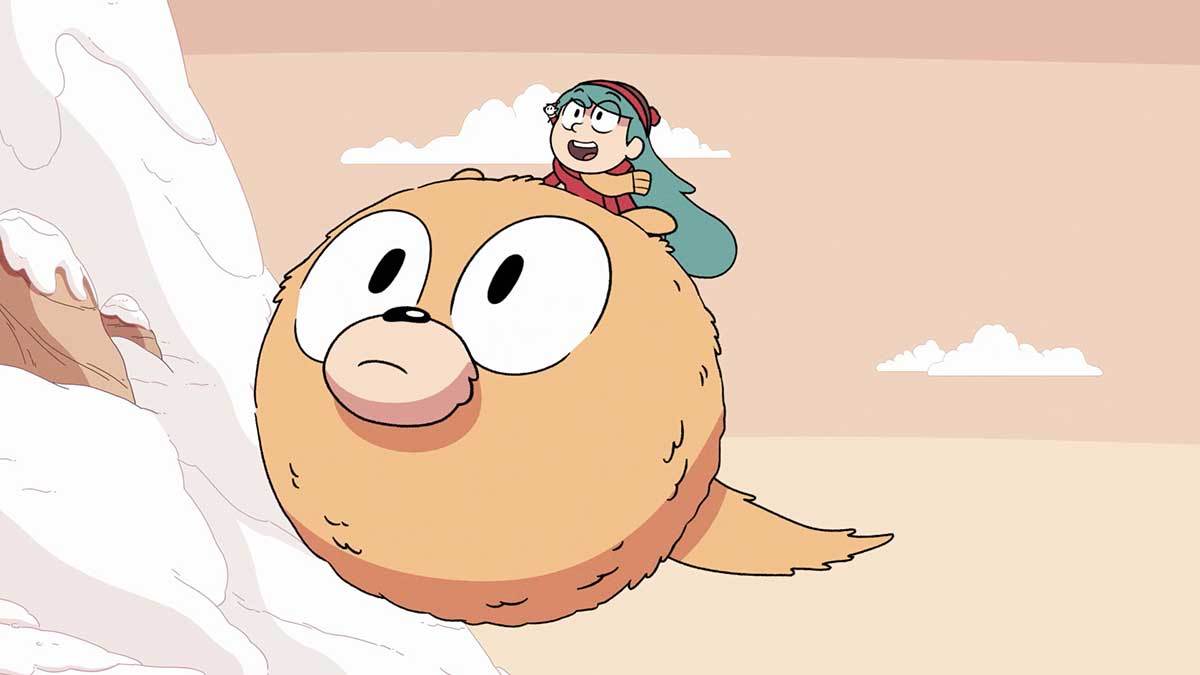
For people who are fans of the Hilda comics, what can they expect from the books that will add to the existing Hilda universe?
Each incarnation of Hilda comes with its own storytelling opportunities as well as its own challenges. I have tried to play to the strengths of chapter fiction and write fun, fast-paced stories that can be read aloud in a classroom or at bedtime. Fans of Luke’s comics can expect the story in Hilda and the Hidden People to be familiar, but with new scenes here and there.
My editor at Flying Eye suggested that Hilda’s quest to find the office of the elf Prime Minister was one part of the story that could be extended, so there are now some extra obstacles on that journey – a sense of Hilda’s worth being tested in the style of a classical hero.
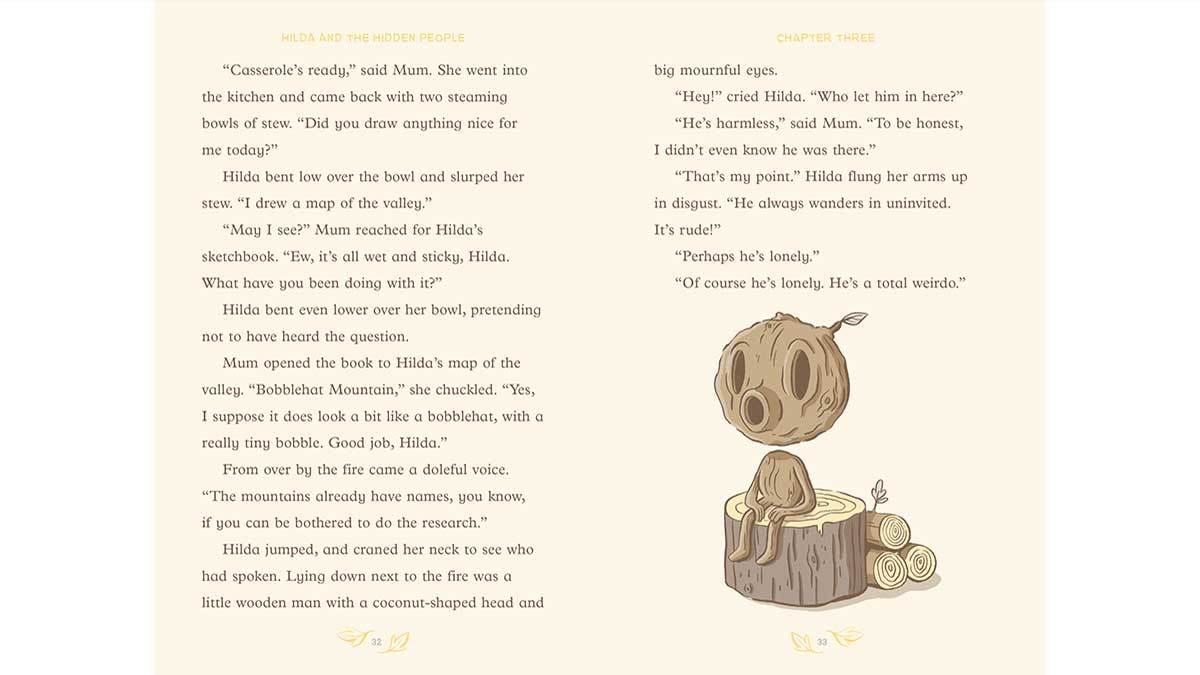 Pages from inside Hilda and the Hidden People
Pages from inside Hilda and the Hidden People
The narrative is told in the third-person, but it is such a close, limited third-person point of view that readers will experience the story quite intimately from Hilda’s perspective. Expect plenty of emotion, and a story arc that sees Hilda growing and learning new things about herself...
It also feels right for Hilda stories to be driven along by dialogue, so there is loads of direct speech in the book. I have retained all of Luke’s iconic jokes (‘Such is the life of an adventurer’; ‘I’m more of a writer than a fighter’; ‘I don’t even have hands’, etc) and added a few new ones which I hope are in the same spirit.
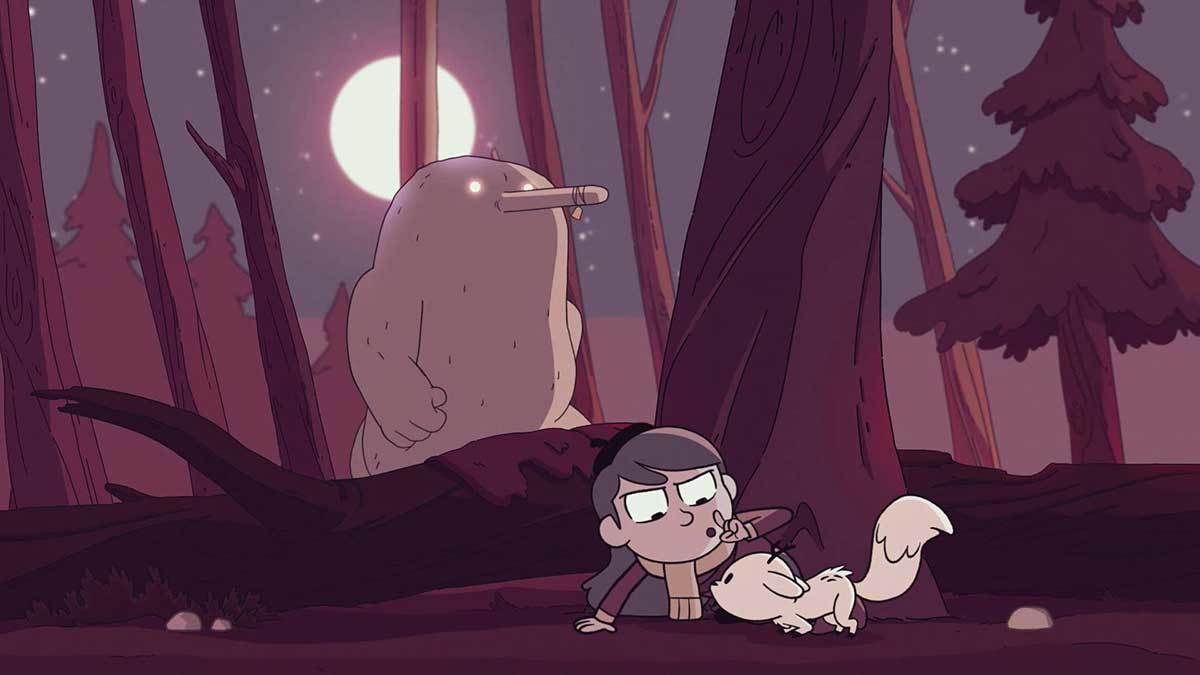
Expect plenty of description, too – the smell of Hilda’s cabin in the wilderness, the texture of a troll-rock, the sound of an Ancient Giant’s voice – giving readers a clear sense of Hilda’s everyday life in the wilderness. Of course, the wonderful hygge (cosiness) of the comics is still a big part of that:
'Hilda and Twig passed the catfish pond where Hilda swam in summertime, and the hollow bludbok tree, which was great for building dens. Orange light shining from the windows of her house told her that Mum had already lit a fire in the hearth. Dinner would be on the table soon. A piping hot stew, most likely, and a big bowl of rowanberries.'
Best of all, readers can expect lots of fun new illustrations by Seaerra Miller, drawn in the style of Luke Pearson. As well as illustrating the Hilda novels, Seaerra has a book of her own in the pipeline, which will be published by Flying Eye in 2020.
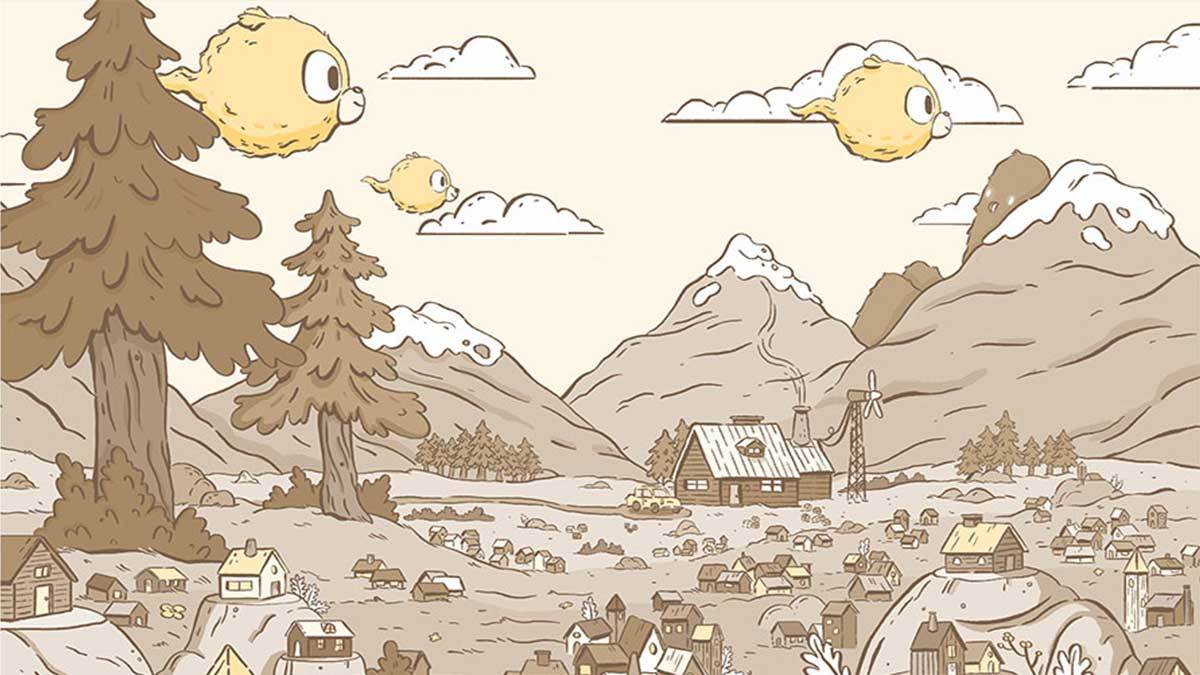 Illustration by Seaerra Miller for Hilda and the Hidden People
Illustration by Seaerra Miller for Hilda and the Hidden People
The Hilda Netflix animation is being released to coincide with the start of the Hilda fiction book series. How true are the Hilda fiction books to the new Netflix show?
The first series of the Netflix show consists of 12 episodes. My brief was to write three TV tie-ins to accompany the series. Hilda and the Hidden People is fairly true to the first (double-length) instalment of the Netflix series, covering familiar troll-rock/elves/midnight-giant territory.
For the other two books, everything was more complicated. The biggest challenge was how to combine 11 episodes of a series into two books without the resulting books feeling weirdly episodic. Writing the synopses took a long time, as Harriet and I combined and re-combined episodes to come up with a concoction that tasted right.
In the end, we came to the same conclusion independently: that my second Hilda book should be set in term time against the background of Trolberg’s Bird Parade preparations and my third book should be set during a school vacation with a focus on Hilda’s adventures as a Sparrow Scout. So while the basic content of the adventures will be recognisable to viewers of the Netflix series, the chronology is noticeably different.
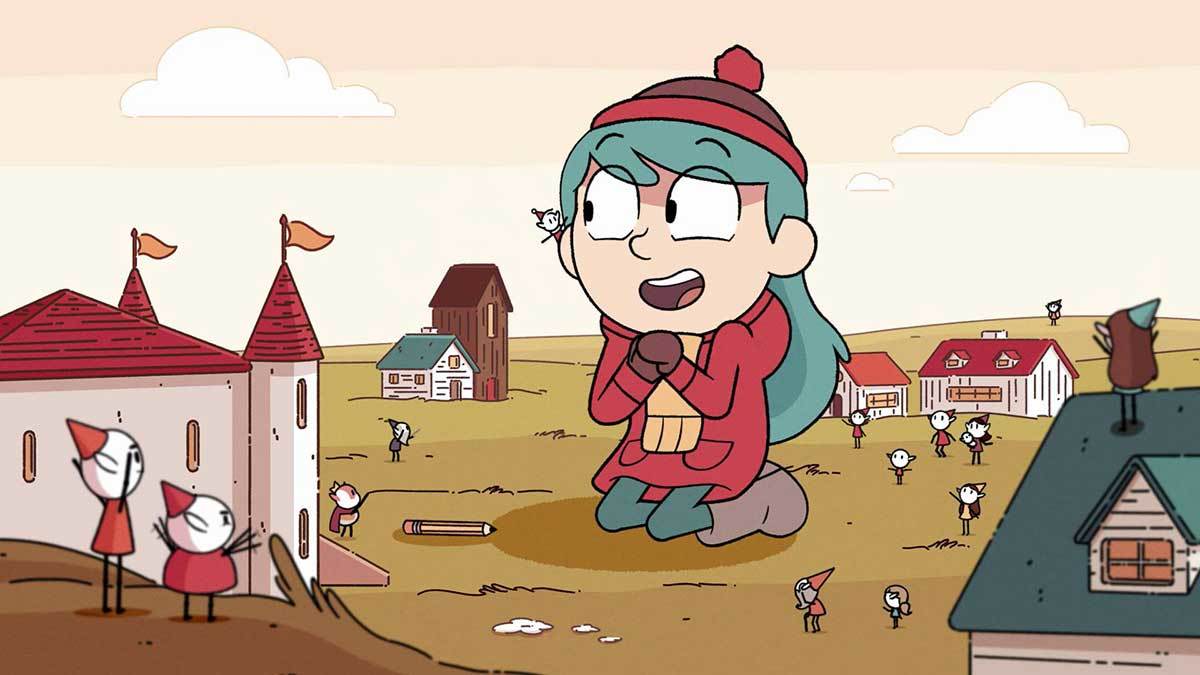
Silvergate Media (the production company behind the animation) reined me in whenever I strayed too far from their version of the Hilda stories, but also permitted a healthy degree of artistic license. I needed that. Otherwise the books would have ended up being nothing more than a blow-by-blow retelling of the Netflix series.
What shaped your Hilda stories? Did you get direct input from scripts or storyboards?
The scripts were my primary resource, and also the "Hilda Bible", which was put together by Silvergate Media with help from Luke. It contains notes on everything that can be considered canonical, as well as some intriguing hints about what might be in store for Hilda fans in future episodes.
I did not see any storyboards, but occasionally asked to see images of particular characters or settings, such as the Trolberg librarian, the school principal or the Lindworm’s lair.
How would you describe the character of Hilda to someone who has never met her?
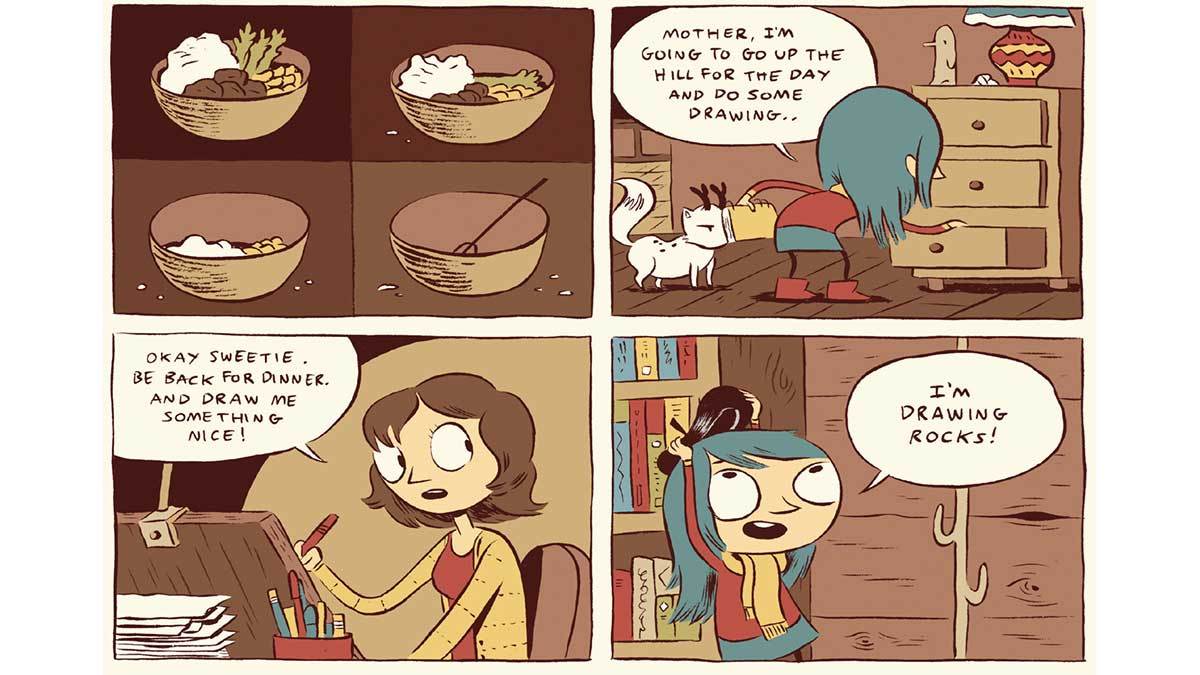 From the Hilda comics
From the Hilda comics
Hilda is brave, adventurous, inquisitive and quirky. When a storm is brewing, she rushes outside to sleep in the tent. When she sees a terrifying troll rock, her first impulse is to sketch it. When she gets lost in a dark forest, she is thrilled to the core, for ‘such is the life of an adventurer’.
There is not even a whiff of goody-goody or Mary Sue in Hilda, but still she stands out as a positive role model for children – a courageous girl striding cheerfully through the world, seeking out the good in everyone and everything.
My daughters (aged 8 and 5) both love Hilda, and I have become fond of her, too. As a Quaker, I particularly value the emphasis on non-violence in her character. It’s never preachy, but it’s there. Hilda empathises and negotiates instead of kicking ass.
Which character do you relate to the most?
The various giants, probably. As an extremely tall person in a world of normal-sized people, I can relate to the physical awkwardness and social dislocation experienced by the Midnight Giant and his ilk!
